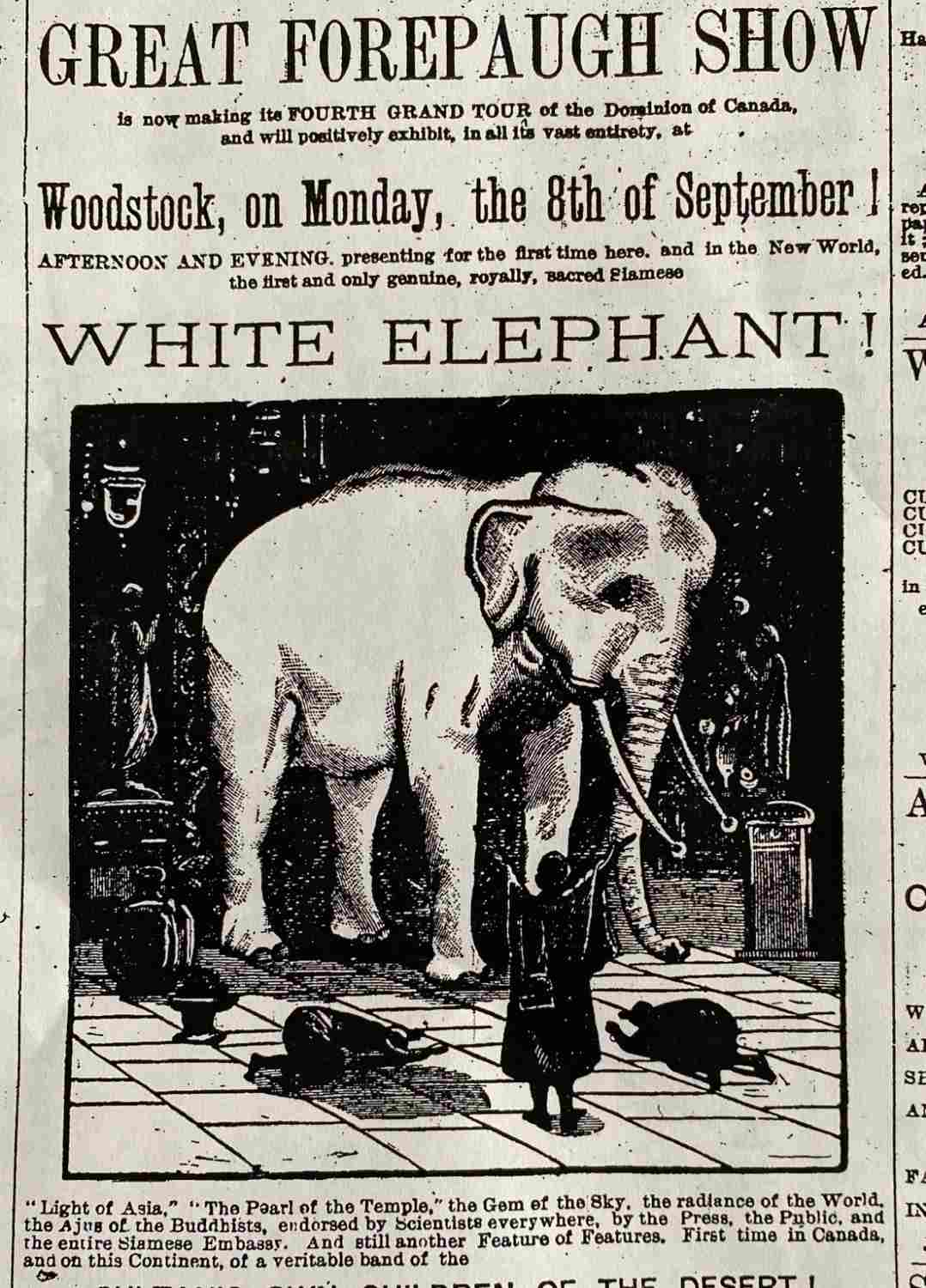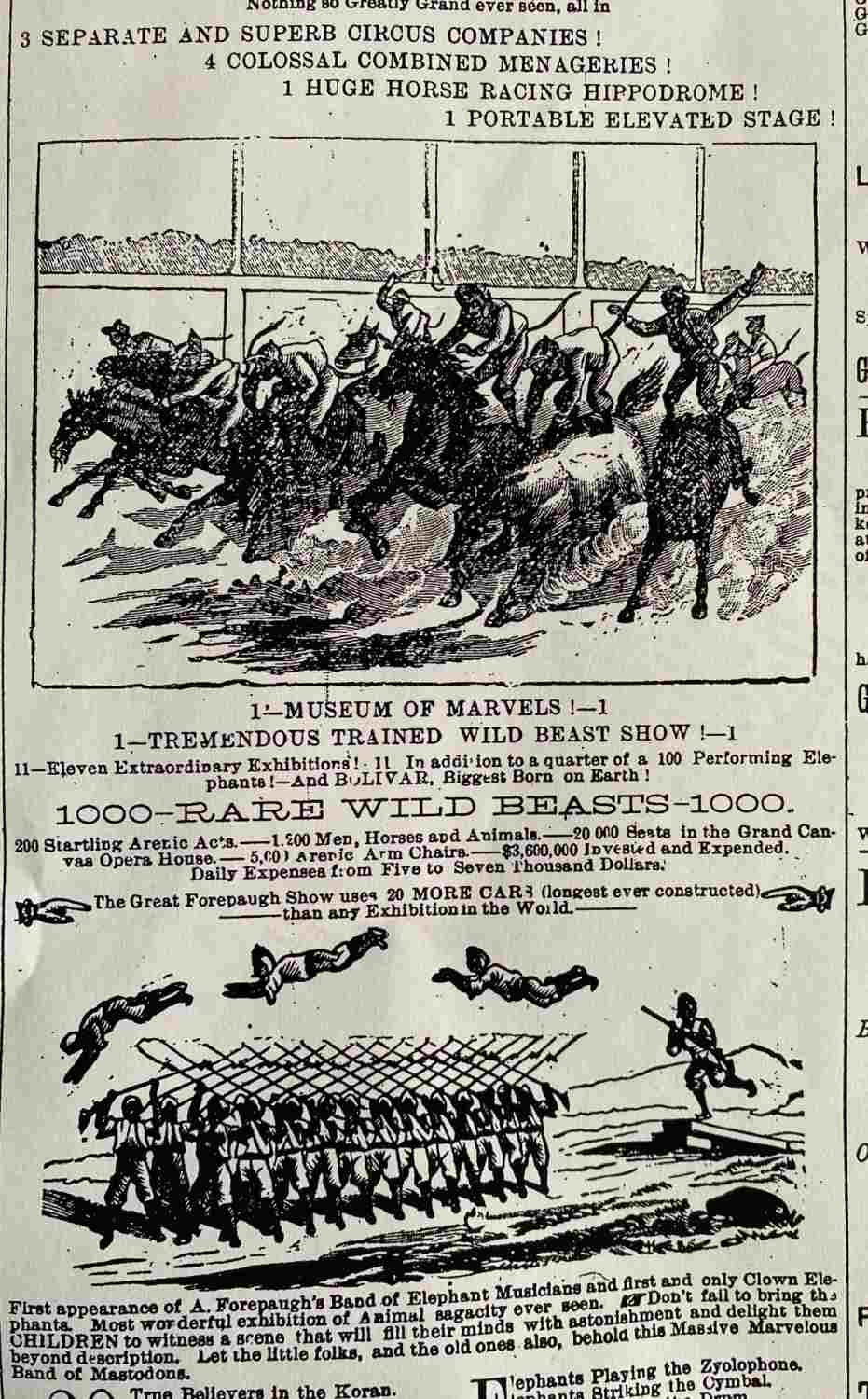The Circus Comes to Town!
The Circus Comes to Town!
Come one, come all! The Great Forepaugh Show arrives in Woodstock on September 8, 1884.
By Liz Dommasch, Archivist
From the late 19th century through the first half of the 20th century, travelling circuses were a major form of spectator entertainment in the United States and Canada and attracted huge attention whenever they arrived in a city. In September 1884, the Great Forepaugh Show arrived in the City of Woodstock drawing an immense crowd wishing to see the various tents, animals and acrobatic acts.
Adam Forepaugh’s circus, known under various names, rose in prominence in the mid-1800s and was considered a rival to P.T. Barnum (though according to the Woodstock Sentinel-Review, his procession “was, perhaps, not equal to Barnum’s but it was certainly one of the finest ever seen in Canada”). His innovations included commissioning the first railroad cars for a traveling circus in 1877, the first three-ring presentation, and the first Wild West show. He was also the first circus operator to separate the menagerie from the big ring in order to attract churchgoers who might be leery of the “sinful” attractions of the circus acts, yet still desirous to see the display of exotic animals.
Forepaugh’s largest draw was the “Light of Asia”, a regular gray elephant he whitewashed and marketed as a genuine white elephant in order to compete with Barnum’s so-called cheap imitation (his white elephant was actually pink). Although the elephant was advertised to appear in Woodstock, it was surprisingly absent. Instead, spectators were greeted with a number of wild animals, never before seen in Canada, including the mandrill, which was said to be the only living specimen of the “gorilla” in captivity. Lions, tigers, dogs, monkeys, and horses were also included in the show.
were also included in the show.
In the ring, snake charmers performed, trapeze artists soared through the air, while acrobats formed a human pyramid, and a herd of trained elephants amazed onlookers by playing the trombone, xylophone, cymbal, drum, and organ. So-called clown elephants also delighted the crowd with their performance. There was also a “tribe” of Muslim Mamluks, Moors, and Arabians that took part in a parade of nations on Exhibition Day, which today would be considered horribly inappropriate and demeaning, but in the late 1800s would have been considered exotic and mystic and would have drawn a large crowd of onlookers.
Following the event, the Woodstock Sentinel-Review claimed that Forepaugh’s circus was one of the best that had been seen here and that “Woodstock kept up its reputation for being one of the best circus towns in Canada”. Forepaugh’s Circus continued to operate until 1889 when Adam Forepaugh sold his circus acts to James Anthony Bailey and James E. Cooper and sold his railroad cars to the Ringling Brothers. He passed away the following year.

Image credits:
Circus advertisements. Woodstock Sentinel-Review, 20 August 1884, pg. 8.
Light of Asia, Forepaugh’s White Elephant, ca. 1884 https://en.wikipedia.org/wiki/Adam_Forepaugh#/media/File:Light_of_Asia,_Forepaugh's_White_Elephant.png
